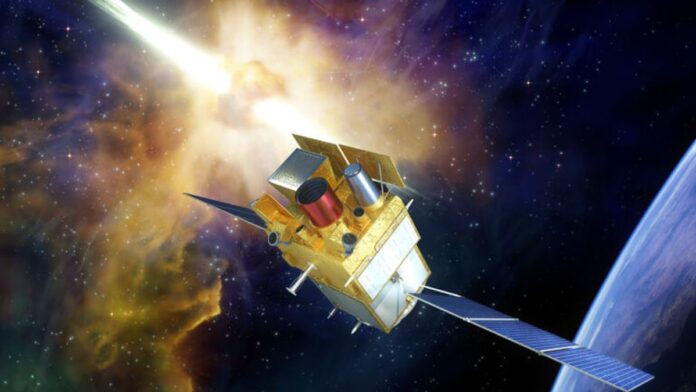France is set to send a pair of advanced science instruments to China in preparation for launch of a joint space observatory.
The Space-based multi-band astronomical Variable Objects Monitor (SVOM) is a collaboration forged in 2014 between the China National Space Administration (CNSA) and the Centre national d’études spatiales (CNES).
The satellite will be on the lookout for short-lived and extremely violent cosmic explosions known as gamma-ray bursts by detecting high-energy electromagnetic radiation in the X-ray and gamma-ray ranges.
Related: What Is a Gamma-Ray Burst?
The joint mission sees China providing the Gamma Ray Burst Monitor (GRM) to measure the spectrum of emissions from GRBs and Visible Telescope (VT) which will look for light emitted in optical wavelengths immediately after a gamma-ray burst (GRB) event.
France, meanwhile, is responsible for developing the ECLAIRs telescope and Microchannel X-ray Telescope (MXT), with the latter using innovative “lobster eye (opens in new tab)” optics to allow a large field of view.
The 2,050-pound (930-kilogram) satellite is now set to launch on a Long March 2C rocket from the Xichang spaceport in southwest China in December.
The mission’s Twitter account revealed (opens in new tab) on Feb. 21 that the two payloads are now ready to travel to China for integration with the satellite.
En particulier, le télescope ECLAIRs a été équipé de capots de protection, soigneusement emballé et placé dans le conteneur avec l’instrument MXT, en vue de leur envoi imminent en Chine pour les intégrer sur la plateforme satellite 📦🛰️. Crédit photo : CNES. https://t.co/czsvp0T8or pic.twitter.com/rWYanEveJrFebruary 22, 2023
The SVOM satellite was developed by China’s Shanghai Engineering Center for Microsatellites and is designed for a nominal three-year-long mission with a possible two-year extended mission to follow.
Both China and France will contribute to the mission’s ground segment for controlling the spacecraft, receiving science data and orchestrating followup observations of GRBs.
The mission consortium (opens in new tab) includes institutes including the Institut de Recherche en Astrophysique et Planétologie (IRAP) in France and the National Astronomical Observatory of China (NAOC) and Institute of High Energy Physics (IHEP) in China, as well as the Leicester University in the UK and the National Autonomous University of Mexico (UNAM).
Follow us @Spacedotcom (opens in new tab), or on Facebook (opens in new tab) and Instagram (opens in new tab).

